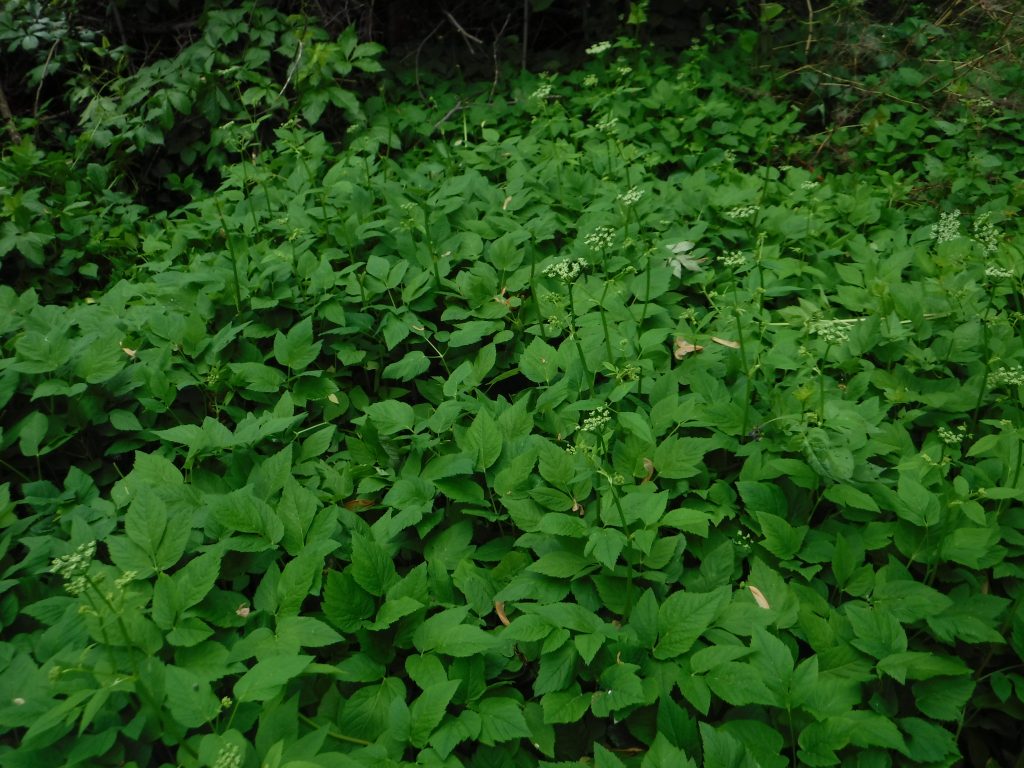
Goutweed, also known as Bishop’s Goutweed or Snow-on-the-mountain, is a Eurasian garden escape, often planted as a ground cover. It occurs in two varieties; wild and blended. The blended type is more common in gardens because it displays two shades of green and is aesthetically pleasing.
''Variegated'' type.
Photo credit: Conseil régional de l'environnement - région de la Capitale-Nationale
The seeds can survive in North America, but its most common reproduction method on this continent is through its rhizomes. Colonies can form dense ground covers shading all other plants and preventing the establishment of competition.
It will often colonize open and disturbed sites, which is why it is rarely found in mature forests. However, once an individual is established somewhere, it can spread rapidly, even in the shade.
Humans are the main dispersion vector because goutweed favors disturbed grounds often found in urban, abandoned, or developing areas. It also seems to have been voluntarily dispersed into the wild in North America.
This species does not spread very easily in the wild on its own, but only one tough individual is required to spark a massive spread in a given area. In the United States, some populations completely invade plains and cover surfaces of up to 2 hectares.
In Laval, several populations were surveyed by our organization. The largest one was found in a maple bush located to the east of Pie-IX bridge.
Sources
Sentinelle – Government of Quebec (in French)




